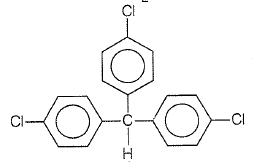The compound which on reduction with gives two diffrent alcohols:
1.
2.
3.
4.
Which one of the following can be oxidised to the corresponding carbonyl compound? [2004]
1. 2-hydroxy propane
2. Ortho-nitro phenol
3. propane
4. 2-methyl-2-hydroxy propane
Which compounds will not reduce Fehling's solution?
1. Methanal
2. Ethanal
3. Trichloroethanal
4. Benzaldehyde
Muscone (an explosive perfume secreted by musk deer) has the structure


. Its IUPAC name is:
1. 3-methyl cyclopentadecanone
2. methyl cyclopentadecan-3-one
3. 3-methyl cyclotetradecanone
4. 3-methyl cyclohexadecan-3-one
Oxalic acid on treatment with conc. H2SO4 gives:
1. CO + H2O2
2. H2O +CO+CO2
3. HCOOH + CO2
4. HCOOH + CO2 +O2
The IUPAC name of crotonaldehyde is:
1. But-2-en-1-al
2. Prop-2-enal
3. 4-Methylpent-3-en-2-one
4. None of the above
Which of the following would produce secondary alcohol?
1. C6H5COCH3
2. C6H5COCH3
3. C6H5CHO
4. C6H5COOMe
Trichloroacetaldehyde, CCl3CHO reacts with chlorobenzene in the presence of sulphuric acid and produces
| 1. |  |
| 2. |  |
| 3. |  |
| 4. |  |
1. 
2. 
3. 
4. 
In the below reaction, product 'P' is:
| 1. |  |
2. |  |
| 3. |  |
4. |  |
Which of the following compounds with molecular formula, C5H10 yields acetone on ozonolysis?
1. 2-methyl-2-butene
2. 3-methyl-1-butene
3. Cyclopentane
4. 2-methyl-1-butene







